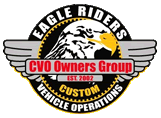A bit of a side track conversation on the topic...
This came off a friends bike who has a SE compensator that has gradually been getting noisy... He has about 6,000 miles on the SE compensator assembly..... He has decent power in his motor - more than stock - but rides it very easy... Upon installation, the SE Compensator ran very quietly. After a few thousand miles, he began to notice a definite clunk upon acceleration (even reving the motor in neutral would produce a clunk) - then it just gradually became more noisy over time - almost sounded like a rattle after a bit. So I took it all apart for him and found some wear on the fiber disc - and found I could move the compensator by hand - which I could not do on initial installation. Not easily, and not enough to begin to slide it up the ramps, but I could get movement out of it by hand. He already sold his stock compensator - so there is no going back - and now has the dilema of what to do... For now, I just flipped the fiber disc over so the grooved worn side faces outward and the unworn side faces the compensator. After flipping the disc over and reinstalling it, I can no longer move the compensator by hand. The disc is only about .010 thinner than stock at the worn surface - but where it is worn is very smooth as compared to the unworn side (less friction?) Everything else in the compensator looked like new. Starting the bike upon reassembly, there is still a clunk - but the rattle is gone (for now). The compensator assembly was torqued to the spec as stated in the installation instructions - no more/no less.
DJ - opinions on how to proceed? Replace the thrust washer? or? Any assembly instructions or hints other then follow the provided instructions?
 Author
Topic: Top end "clacking" sound (Read 55140 times)
Author
Topic: Top end "clacking" sound (Read 55140 times)

